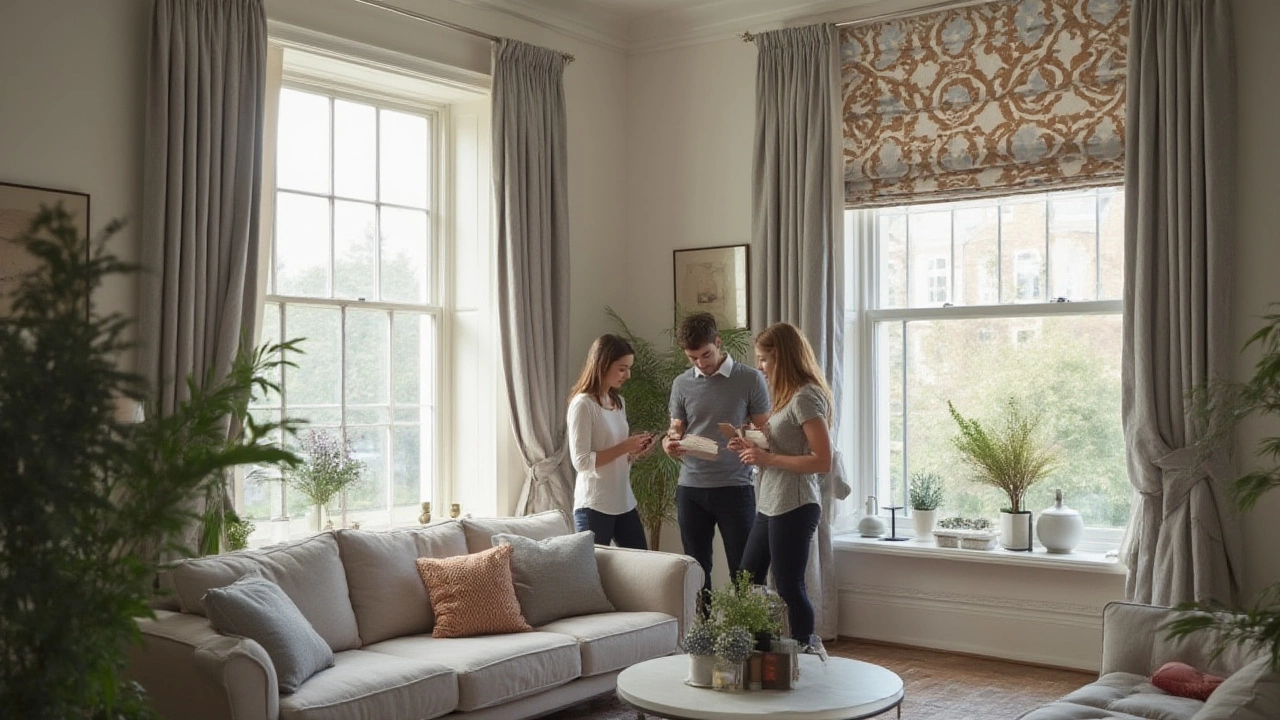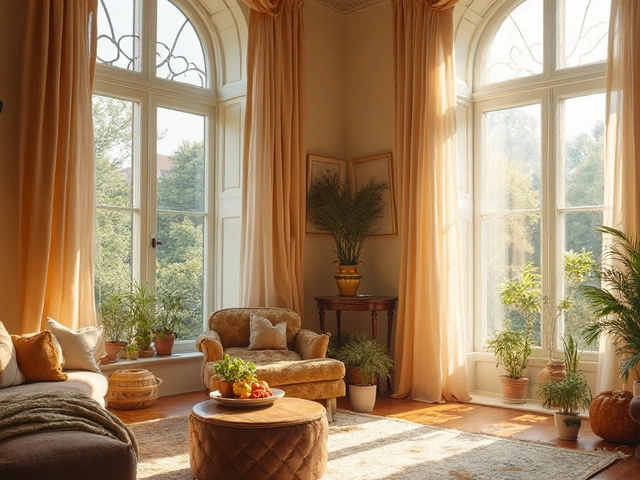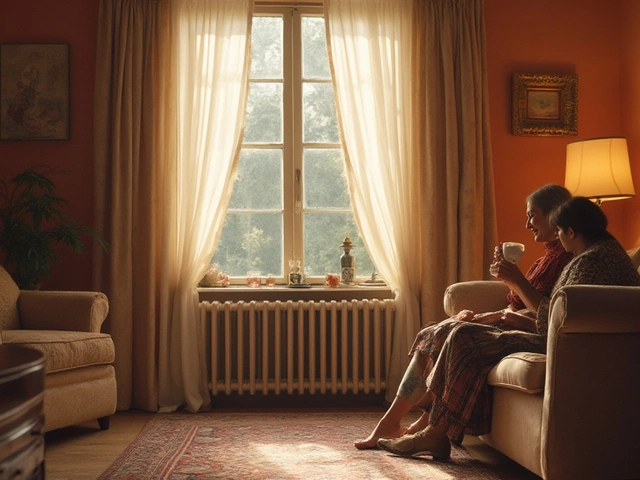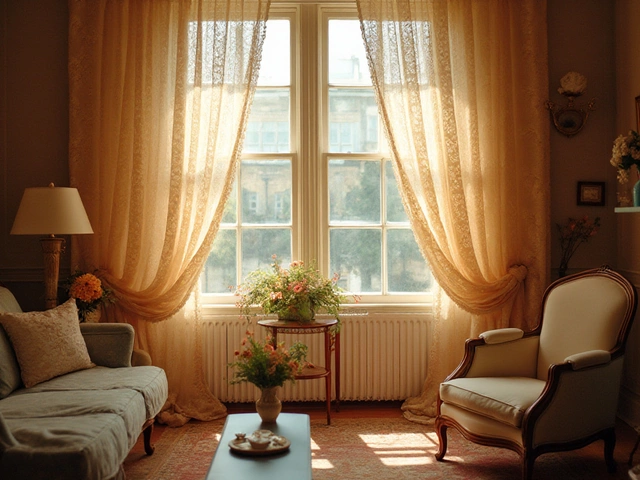Sometimes, a room just looks unfinished for reasons you can’t quite put your finger on. It might not be the couch or the wall art. Usually, it’s those long strips of fabric hanging from your windows: the curtains. People tend to overlook them when decorating, but the length of your curtains can quietly make your space look chic or completely off. There’s no one-size-fits-all rule, though. Long or short curtains each have a charm, but the right choice depends on more than you’d think. Let’s figure out which works best, so your space never looks like your kid’s playroom unless that’s exactly what you want.
Are Long Curtains Always Better?
So, do long curtains really make a room look fancier? Ask any designer who’s been around for a while, and you’ll hear them rave about floor-length drapes. It’s not just interior design wisdom passed around like a secret handshake—there’s science to back it up. Long curtains draw your eye upward, making ceilings look taller, which is why almost every photo in home magazines and Instagram feed from LA to Copenhagen shows them grazing or just touching the floor. This visual trick creates an illusion of height and grandeur. In fact, a survey from the American Society of Interior Designers found that 76% of designers recommend full-length curtains over short ones for living rooms and master bedrooms.
Now, there isn’t just one way to style them. There’s “kiss” length, where the curtains gently touch the floor, and “puddle” length, where they trail a couple of inches beyond it for drama and old-world flair. If you’re the practical type and want easy cleaning, choose the kiss. If you love elegance and don’t mind a dust bunny or two, go for the puddle. And for anyone worried about dust or dragging fabric in high-traffic areas, there’s the “breaking” style—about a half-inch longer than floor length—which barely folds at the bottom. It looks intentional, not sloppy. Long curtains also offer better insulation, which matters if you’re tired of electric bills soaring with the seasons. Thermal curtains, specifically, cut down on light and keep warmth inside where it belongs in winter, or out when summer is blazing. If your window is right next to a radiator or pets love napping by the sill, you might want to weigh looks against daily comfort. But for pure style, nothing beats the drama and grace of curtains that skim the floor.
People also love long curtains because they hide ugly baseboards, old heaters, or an unfortunate paint job you just haven’t gotten around to fixing. They provide privacy, block more light, and, let’s not forget, they create a sense of softness around the harsh straight lines of windows. If you live in a high-rise or need to separate an open-plan space, long curtains act as mini walls for visual zoning. Some renters even use them to cover closet doors or unused doors, making small apartments feel cozier. Just make sure you measure from the rod height to the floor—don’t guess and end up with everything awkwardly floating inches above where it should be.
When Short Curtains Make Sense
Short curtains don’t always get the love they deserve, but sometimes they’re exactly what a space needs. Picture a kitchen window above a sink, where floor-length fabric would get soaked and grimy no matter how tidy you are. In bathrooms, short curtains protect against moisture and are less likely to become mildew magnets. Older houses often have radiators or furniture blocking the space below windows; that’s where short curtains shine. They let in more light and keep things feeling open, which can be a lifesaver in small rooms or basement windows.
There’s also function to think about: short curtains are easy to swap out for washing, which matters if you have pets, kids, or a fondness for homemade marinara sauce splatters. If you’re chasing a cheerful, vintage look, cafe curtains—those ones that cover only the bottom half of the window—are the classic French bistro touch. You’ll see these in cheerful kitchens and airy breakfast nooks everywhere. Try them in a bright gingham or crisp white, and you’ll see what I mean. These short styles work especially well in homes with lower ceilings, too. While they won’t fake extra height like long curtains do, they don’t draw attention to the wall’s end point and can actually keep tiny rooms from feeling overwhelmed.
Afraid of looking dated? You don’t have to be. It’s all about the hem and the rod. Forget frilly valances or ruffled ends—go for sharp, straight hems and simple curtain rods, even for short panels. Want it to look a bit more modern? Mount the rod several inches above the window frame instead of right at the top. It lifts the eye and avoids that “shrinking window” effect that makes rooms look boxy. Short curtains also leave room for shelves, plants, or storage underneath, making them practical in tight spots where you need every square inch. Next time you’re in an old diner and spot those perfect half-curtains, you’ll realize some trends never actually left—they just needed the right room to thrive.
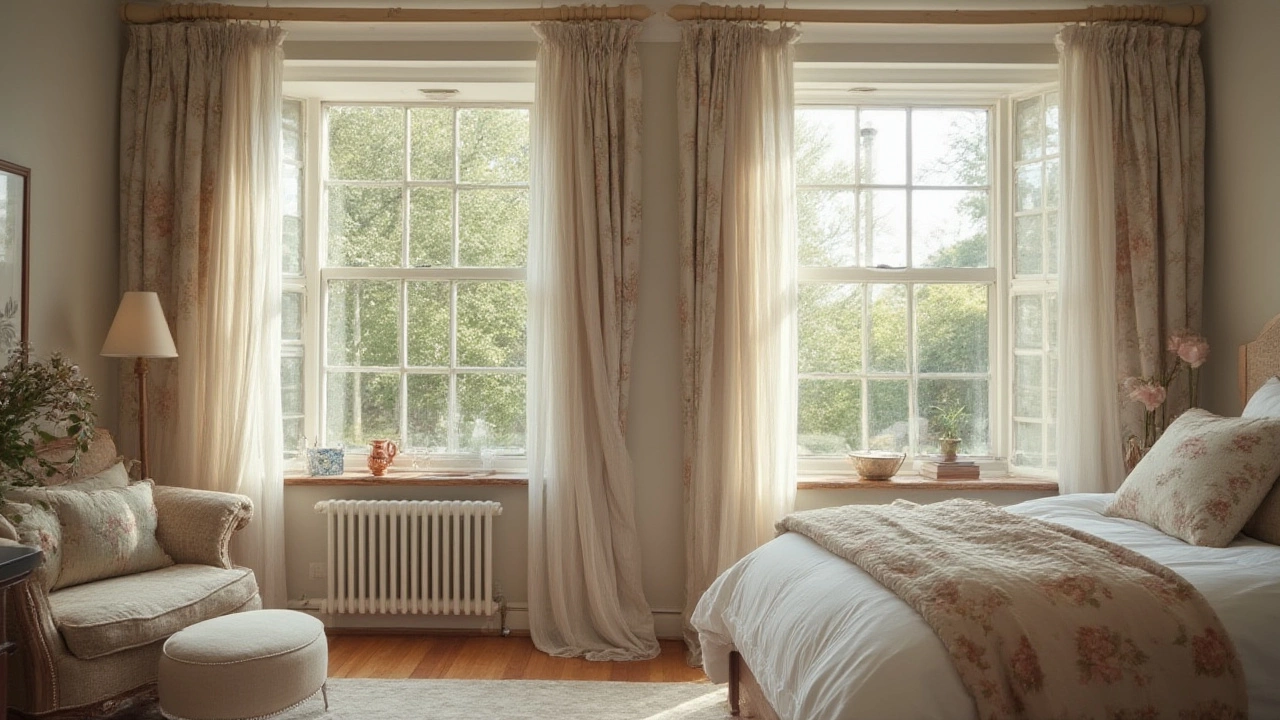
Finding the Perfect Curtain Length for Your Space
Matching the right length to a room isn’t about following rules—it’s about reading the room itself. Interior designers always check for three big things: the function of the room, window placement, and what’s under each window. For grand living rooms, bedrooms, and home offices where you want a “finished” look, long curtains usually take the win. But if you’ve got deep windowsills or use window space for potted herbs or cat beds, short curtains are simply more practical. Your lifestyle really decides what’s best. Got kids who tug on everything? Go short and spare yourself daily drama. Renting with weird window frames or cheap blinds included? Long curtains can hide them completely.
When picking a length, take a look at how much sunlight the room gets. Love to sleep in on weekends? Go for floor-length blackout curtains in bedrooms—they keep the sun at bay and noise down. Hallways and laundry rooms often call for something short and sweet. In busy kitchens, short curtains won’t drag through pasta nights or clash with the coffee maker. If you have pets, you’ll quickly learn that long pooling curtains are irresistible bed zones for dogs and cats. For allergy sufferers, short washable curtains make keeping dust at bay so much easier. Preferences aside, there’s the practical side: always use a tape measure, and double-check the distance from rod to floor—or window ledge, for short curtains. And buy curtains a few inches wider than the window for better coverage and that lush, hotel look.
The style you love matters, too. Minimalist? Clean, crisp lines and long curtains, hung high and wide, offer modern drama. Boho spaces, with layered rugs and plants galore, often mix both lengths for texture and interest. Traditionalists may lean on thick, long curtains with tie-backs or tassels, while fans of the mid-century look often tilt toward tailored, short panels. Don’t forget about hardware; the rod’s height changes everything. Hanging it closer to the ceiling, about 6 to 12 inches above the window frame, tricks the eye into thinking the walls are taller. And if you’re not into installation, there are plenty of no-drill curtain rods these days, letting you play with different looks without leaving holes behind.
Tips, Tricks, and Do’s & Don’ts for Curtain Style Success
So, should you choose curtains that graze the floor or stick with ones that stop at the sill? There’s no wrong answer, just better fits for certain spaces and lifestyles. But there are some tricks you can use. First, don’t skimp on fabric—curtains that are too narrow look like sad ribbons, not frames for your view. Go at least double the width of your window, even if you never close them. This extra fullness makes any curtain look lush and intentional. Use curtain rings to add a bit of visual height or tape for hemming if you’re between lengths.
If you already have short curtains and crave that long, hotel look, you can sew on a fabric panel at the bottom for an easy, budget-friendly fix. And if you love the flexibility of both, layer lightweight sheers with heavier, longer drapes. It’s a favorite decorator move for adding privacy and dimension. Stay away from entirely outdated styles (think 1980s balloon valances that belong in a soap opera set), and focus instead on clean finishes. Pick rods that suit your hardware—matte black, brass, or even wood to match your floor or furniture.
Use your curtain length to set the mood. Floor-length panels with soft puddles feel romantic in bedrooms and dining spaces. Short, crisp curtains pump up energy for breakfast nooks and home offices. And if all else fails, there’s nothing a little tape or an appointment with a tailor can’t fix. Before you buy anything, hop onto Pinterest or take a walk through your favorite home store, snapping photos of what makes you look twice. Trust your gut. Your space should feel good for you, not just look good in a photo. And next time you ask yourself if curtains look better short or long, remember: it’s less about fashion and more about the life you live inside your home, every single day.
